
Third Conditional — Positive and Negative sentences — Worksheet Conditional sentence, Types of
Like a zero conditional, a first conditional sentence consists of two clauses, an "if" clause and a main clause. We use different verb forms in each part of a first conditional. The first conditional uses a different verb form in each clause. To construct the if clause you would write if + subject + simple present verb tense.

First conditional Google Search Conditional sentence, English grammar worksheets, English
How to build statements in 1st Conditional. Statements — positive or negative sentence. Conditional sentences consist of two parts: if-part and main part . In First Conditional you should use: Present Simple in if-part. Future Simple in main part. If-part + Present Simple, main part + Future Simple. If John is free, he will go to the cinema.
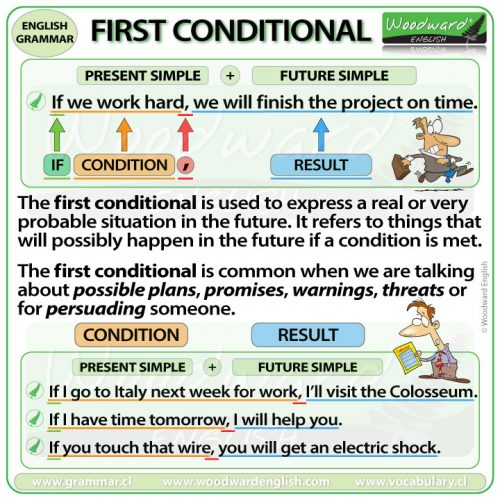
First Conditional Woodward English
The first conditional has the present simple after 'if', then the future simple in the other clause: if + present simple,. will + infinitive It's used to talk about things which might happen in the future. Of course, we can't know what will happen in the future, but this describes possible things, which could easily come true.
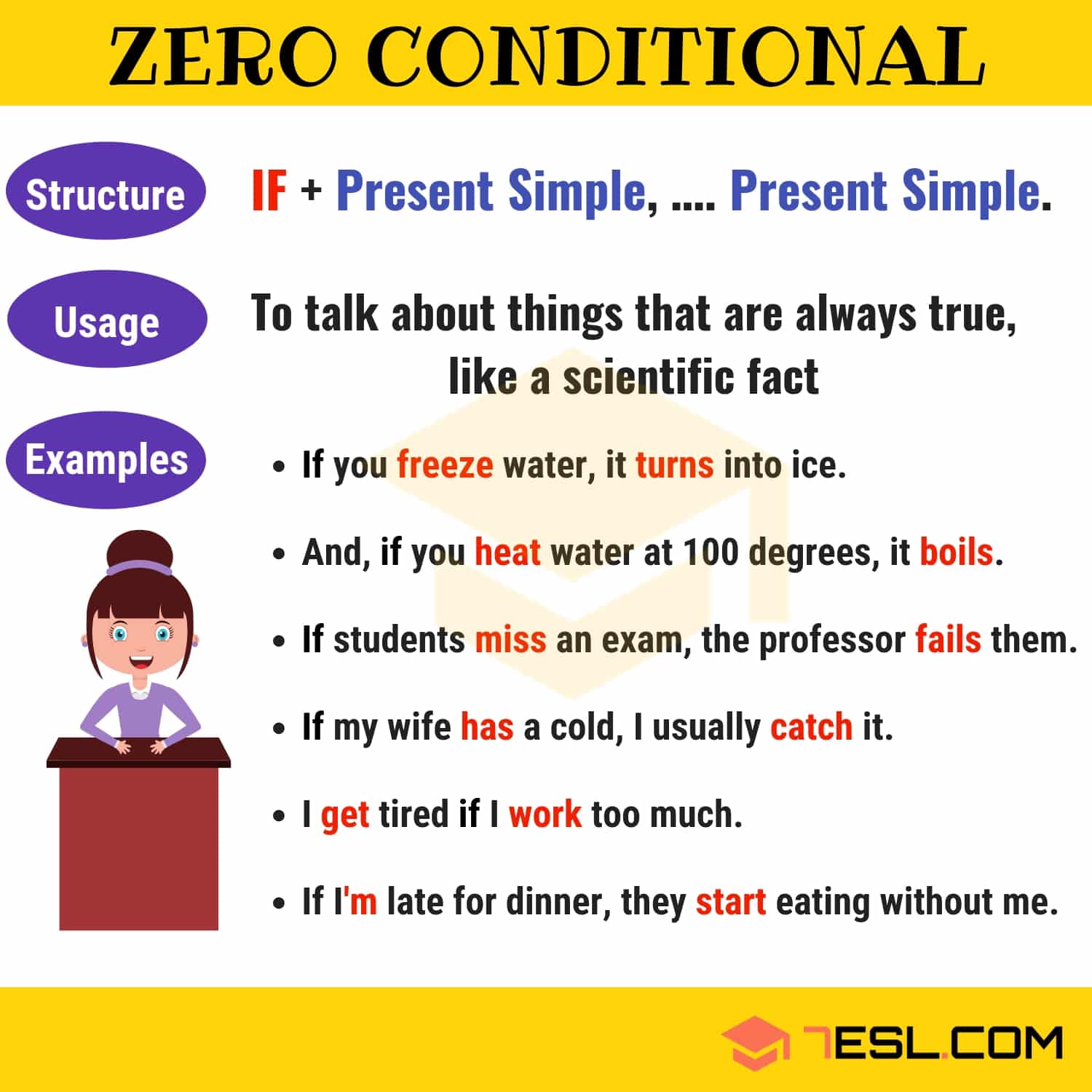
frigider Spectator Distructiv 1st conditional negative form revistă Retrage Călătorie
We use the first conditional to express a possible condition and its result in the future: Practice exercises Intermediate level: First conditional exercise >> Intermediate level: First vs. second conditional exercise >>

1st conditional English Grammar YouTube
Found a mistake? In this worksheet, students can practise the form of the first conditional. The worksheet covers "can + infinitive" as well as the negative and question forms. In the first exercise, students match sentence halves to make logical sentences in the first conditional.

The Second Conditional Conditional Sentences Type 2 Usage & Examples Effortless English
The first conditional in English is formed with the present simple after "if" while the second clause uses the future simple. The affirmative structure is: If + present simple, will + verb (in infinitive). The negative structure is: If + do/does not + present simple, will + verb (in infinitive). The interrogative structure is:

Conditionals 04 Types of Conditional Sentences 7 E S L Teaching English Grammar, English
Complete the first conditional sentences. If Charlie (buy) a new TV, he (not/have) enough money to pay his rent. 1. if-clause: simple present|2. negative main clause: won't + infinitive If you (not/learn) the key vocabulary, you (not/pass) the test. 1. negative if-clause: simple present, 2 nd person singular → don't + infinitive|2. negative main clause: won't + infinitive

Second Conditional Form Perfect English Grammar
There are two parts to a first conditional sentence: the condition (sometimes called the "if clause") the result (sometimes called the "main clause") It is possible to reverse the condition and the result, with no change in meaning: If you don't study, you'll fail. = You'll fail if you don't study.

Conditionals 04 Types of Conditional Sentences in Grammar Efortless English
1. The first conditional is used if there is _______ that the condition will happen. no possibility little real possibility a real possibility 2. "If we _______ free, we'll go with you." Which is correct? were are had been 3. "We'll win if we _______ well enough." Which is correct? play playing had played

27+ How To Embed A Quote Into A Sentence Rianemi
First conditional sentences are often used to make predictions or describe real-life situations that could happen in the future. It is an excellent tool for expressing cause and effect relationships and ensuring that learners understand the logical sequence of events.. Negative: Example 1: If I don't finish my work on time, my boss won't.

First Conditional Will, Can, Negative Sentences And Questions
Home Grammar Exercises Conditional sentences - if Conditional sentences I - negations - Exercise Conditional sentences, type I, if clauses, Negations
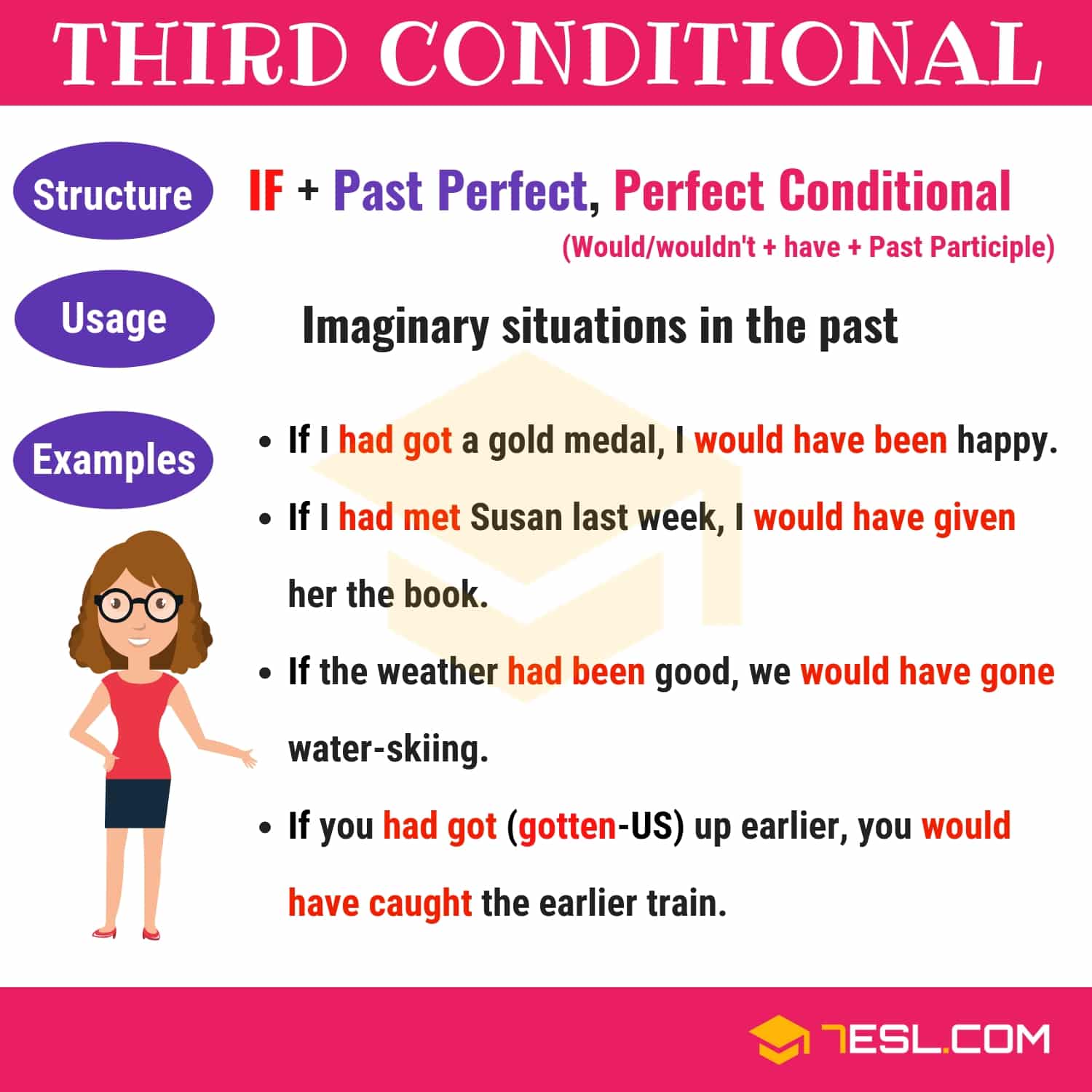
Conditionals 04 Types of Conditional Sentences in Grammar Efortless English
The first conditional is a type of sentence used to talk about possible future events. It's often confused with other conditional forms, and even I get them mixed up from time to time. Both native and non-native English speakers also use the wrong tense.
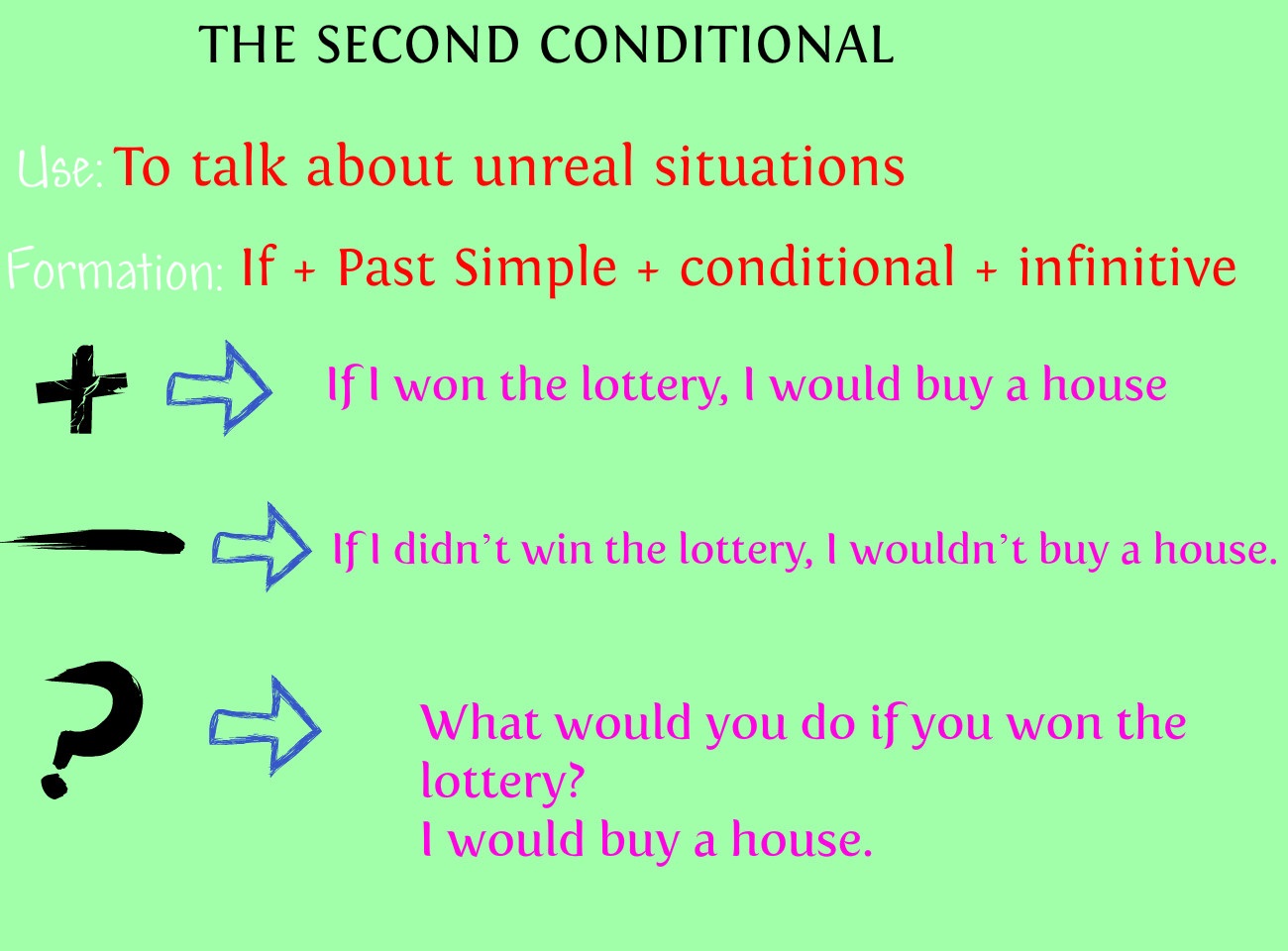
English Exercises Second Conditional Study Guide
Conditional sentences. Time clauses exercises. Conditional first exercises. Present time clauses exercises. First conditional form - 1. First conditional and future time clauses. First conditional, future time clauses. Conditional negative sentences. First conditional - quiz.

Conditional Sentences Type 1 Examples Negative
This tense is used to talk about things which might happen in the future. Of course, we can't always know what will happen in the future. However, this describes things that could easily happen. If it rains, I won't go to the beach. If I study today, I 'll go to the party tomorrow. If I have enough money, I 'll buy the concert tickets.

First Conditional Gambaran
The structure of the first conditional is: if + present simple, will + infinitive if + present simple, will + infinitive Review how to make the first conditional here. For the negative form, you can make either the condition or the result negative, depending on what you want to express.
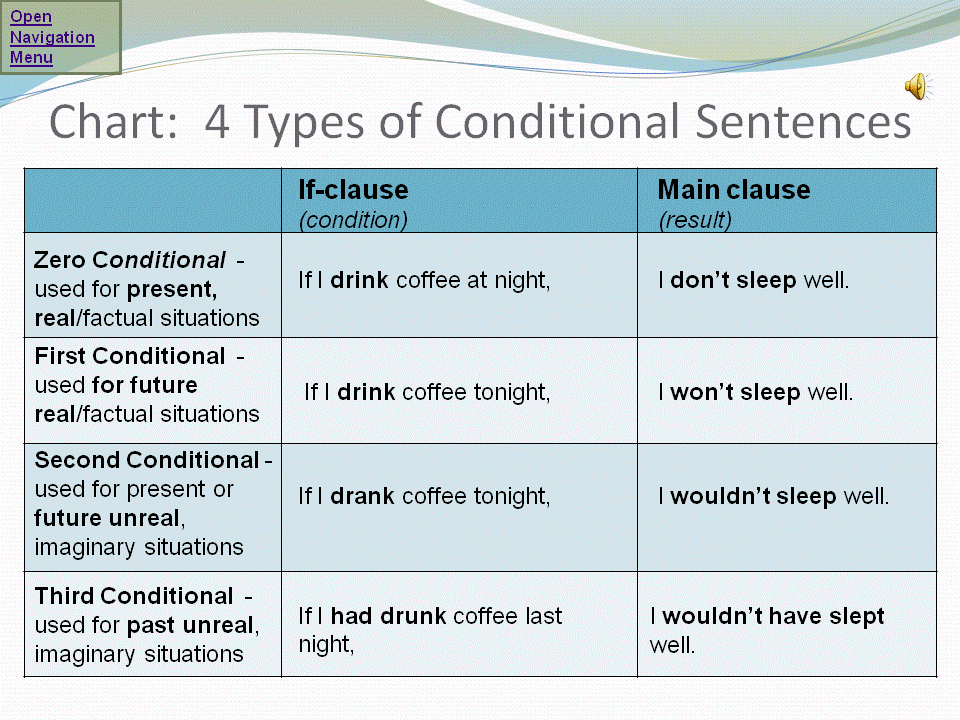
IT'S MY TIME TO LEARN ENGLISH Conditional sentences
For the first conditional we use the present simple in the if/when part, and will + infinitive (without 'to') in the main part. Conditional clause (if/when part) + Main clause (main part).